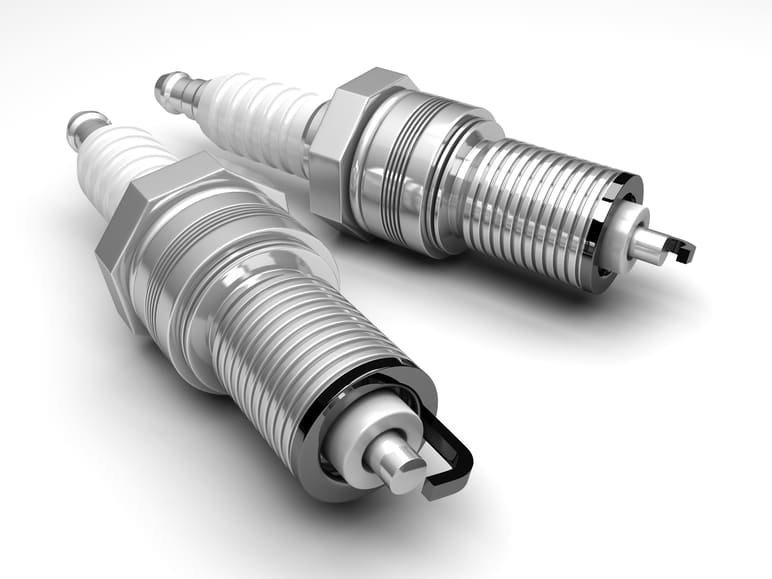
- 1 What are spark plugs?
- 2 Who invented the spark plug?
- 3 Where are spark plugs located?
- 4 What other components do they work with?
- 5 What do spark plugs do?
- 6 What are spark plugs made of?
- 7 How many spark plugs are in a car?
- 8 How long do spark plugs last?
- 9 What are some spark plug problems?
- 10 What are the symptoms of a failing spark plug?
- 11 Do diesel cars have spark plugs?
- 12 What spark plugs should I get for my car?
Spark plugs are a small but essential part of any engine. They are almost like tiny bolts of lightning that get your car going. It doesn’t matter whether you have a V12 turbocharged engine capable of producing several hundred horsepower, if you haven’t got the right spark plugs in a car, you’re going nowhere fast. They help to put the engine’s moving parts in motion, keep the engine running, and make sure that the air-fuel mixture burns smoothly. That said, these little guys can have a pretty rough life and it is always important to ensure that they are checked and maintained regularly.
As engines become more electronically complex, spark plugs are thankfully one of the few remaining things that are relatively simple to replace at home and lots of people get satisfaction out of being able to get their hands dirty and change spark plugs themselves. Although it takes a code reader and a master’s degree in engineering to diagnose and fix the majority of problems with your engine, spark plugs remain accessible and easy to understand. To help keep your car running as it should do, we’ve put together all of the need-to-know info about spark plugs and how to change them if you need to.
What are spark plugs?
The definition of spark plugs is insulated plugs that are screwed into the cylinder head of an internal combustion engine. These plugs provide the spark that ignites the air-fuel mix in the combustion chamber. This mix needs to be ignited so that the combustion process can start and the pistons can start moving, which in turn power the engine. Spark plugs also have a second function as they transfer heat away from the combustion chamber.
Basically, this is what happens: The spark plug sits at the top of the cylinder head. The piston first travels down the cylinder, drawing in a mixture of fuel and air. The piston then goes back up toward the spark plug, compressing the mixture. At the very last second, when the piston is at its fullest reach or top dead centre (TDC), the spark plug sparks and ignites the mixture. The piston is forced back down to create power for the vehicle, then pushed back up again to clear out the exhaust. At that point, the process starts all over again.
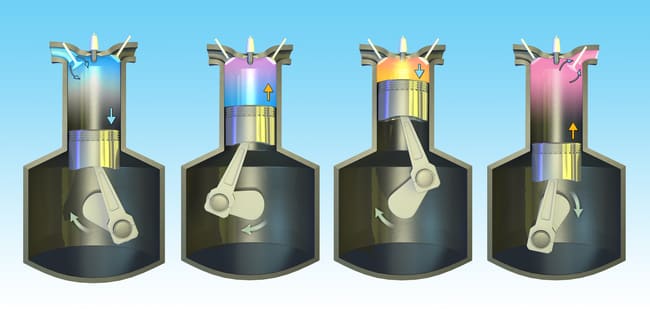
Who invented the spark plug?
Belgian engineer Étienne Lenoir is widely credited with the invention of the spark plug. In 1860, he created the first practical internal combustion piston engine, using a “jumping sparks” ignition system to ignite a mixture of coal gas and air. This innovation enabled continuous power generation and marked a major leap forward in engine technology. Although inefficient by modern standards, Lenoir’s design demonstrated the potential of internal combustion.
Where are spark plugs located?
The location of the spark plugs is always the same. They are fitted in the engine’s cylinder head, with one in each individual cylinder. They can sometimes be tricky to find because manufacturers like to hide them a bit. To try and create the idea of a sleek, flat looking engine bay, they cover some components, spark plugs being one, behind plastic. If you find a group of wide, heavy gauge wires all connected together in the cylinder, the ignition wires, these will lead you to the spark plugs.
What other components do they work with?
Since spark plugs are part of the ignition system, they work in conjunction with ignition coils, which act as an electromagnet and inductor to generate electricity using the car battery, and with distributors that take electricity from an ignition coil and distribute it to the spark plugs and engine.
Many newer vehicles are equipped with a “distributorless” system that doesn’t have a distributor in it. The work of the distributor is done directly through the use of modified spark plugs. This type of system also does not contain spark plug wires. These vehicles are more environmentally friendly and fuel efficient and also reduce the need for frequent tune-ups.
What do spark plugs do?
Spark plugs generate an electrical spark across a small gap, which ignites the fuel-air mixture in the engine. An arc of electricity jumps between two leads which are not touching, but close enough together that electricity can jump the gap between them. This ignition creates the explosion that sets the pistons in motion, powering your vehicle and getting it running.
Spark plugs are absolutely critical to the proper functioning of your vehicle’s engine. Without the electrical spark generated by these small but vital components, the engine would have no power. If they become worn or fail, they may not produce the necessary spark to start the engine. In some cases, faulty spark plugs can even lead to serious engine damage, making their maintenance essential for smooth and reliable vehicle operation.
What are spark plugs made of?
Standard spark plugs typically use a nickel ground electrode, whereas premium spark plugs are equipped with harder, more durable materials like iridium or platinum. These precious metals enhance longevity and performance, making high-end plugs more resistant to wear and better suited for demanding engine conditions compared to their standard counterparts.
The insulator in a spark plug is typically made of aluminium oxide ceramic and has a steel wire shell.
As electrodes erode, the spark plug gap between them widens, and it takes more voltage than the ignition system can provide to fire them, so stopping them from eroding is crucial. Advancements such as improved high-nickel alloys and thicker electrodes have been made to prevent erosion and minimise performance loss. Sometimes manufacturers add precious and exotic metals to help with this. Many modern plugs feature silver, gold, and platinum in the electrodes, and some have copper cores. These metals have various different properties, such as silver being a great heat conductor and platinum resisting corrosion.
How many spark plugs are in a car?
Only vehicles with internal combustion engines require spark plugs. Typically, a car requires one spark plug per cylinder. For instance, a four-cylinder engine will have four spark plugs, while an eight-cylinder engine will have eight. This ensures that each cylinder fires efficiently, maintaining optimal engine performance.
Some high-performance or large engines, particularly in certain sports cars, have dual ignition systems, which use two spark plugs per cylinder. This setup ensures more complete combustion, improves efficiency, and enhances power output by igniting the fuel-air mixture from two points simultaneously.
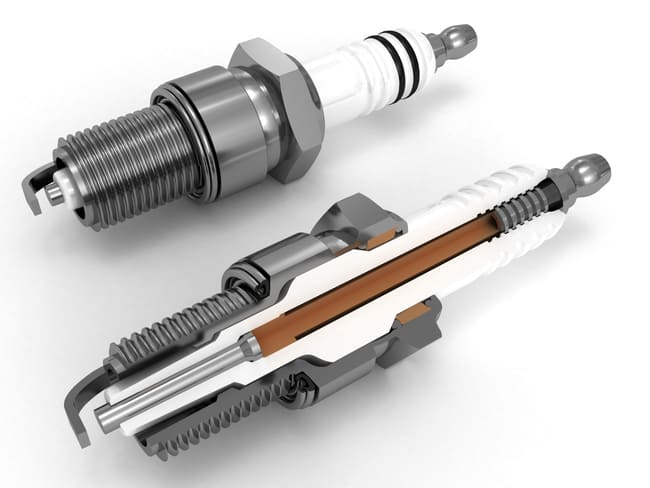
How long do spark plugs last?
Most manufacturers recommend replacing spark plugs every 50,000 kilometres, but their lifespan varies significantly depending on quality and materials. Standard copper spark plugs, which are less durable, typically last around 40,000 kilometres. In contrast, higher-quality plugs made from advanced materials can reach up to 130,000 kilometres. For even greater longevity, “extended life” spark plugs, made from resilient metals like platinum or iridium, can last as long as 160,000 kilometres. Choosing the right spark plug depends on your vehicle’s requirements and driving conditions, ensuring optimal performance and avoiding premature wear.

What are some spark plug problems?
What are the symptoms of a failing spark plug?
Even though they are tailor-made to resist heat and the explosive nature of combustion, the explosions and corrosion lead to smaller or weaker sparks over time, which leads to reduced efficiency in your engine and possibly even engine misfire, where the engine fails to start at all.
Here are some of the things that could indicate spark plug issues:- Slow acceleration
Ignition system problems are the most common cause of acceleration problems. With modern systems, the ECU controls the ignition and tells it when to send electric pulses to fire the spark plug, so the issue may be with a faulty sensor. But a worn-out spark plug is just as likely to be the cause. If you notice that your car is running sluggishly or does not accelerate as quickly as it used to, this may be due to a faulty spark plug that needs to be replaced. - Poor fuel economy
Fuel burns efficiently in the combustion cycle in part due to the smooth operation of the ignition system. When spark plugs don’t work as they should, it’s often because the gap between the spark plug electrodes is either too close or too far apart. A solution for this can be for a mechanic to adjust this gap and restore it to factory settings; you might not even need to replace the spark plug. So if you notice your car has become a bit of a gas guzzler, ineffective spark plugs could be the cause. - Engine misfire
Engine misfire is almost always down to problems in the ignition system. It could be due to a sensor malfunction, or damage to a spark plug wire or the tip of the spark plug that connects to the wire. Stuttering or sputtering sounds from the engine indicate engine misfire. Misfiring is dangerous for the engine and if the engine is allowed to keep misfiring, exhaust emissions will increase, engine power will decrease, and fuel economy will drop. - Engine lurching forward or hesitating
If the engine is not responding correctly to the driver, i.e. with sudden surges in power then slowing down or simply not responding to the pedal, it could be that the engine is sucking in more air than it should do in the combustion process. This causes the delay in power delivery that results in it lurching forward and this is also a potential indicator of spark plug failure. - Rough idle
There are numerous causes of rough idling, but a bad spark plug can be one of them. You will hear a jittery sound and your car can vibrate if it is rough when idling. A bad spark plug may cause your engine to sound rough while idling. If this is happening, checking your spark plugs could help you solve the problem. It can indicate a spark plug problem in which a cylinder misfires only while idle. - Not starting
Since you need spark plugs to start your car, when it doesn’t start faulty spark plugs can often be the cause. Since there are numerous causes, though, it’s always best to get a mechanic to take a look and work out what the problem is. If it is the spark plugs, you can change them yourself or get it done at the garage.
Regardless of what the issue might be, you might end up needing new spark plugs when yours eventually wear out. If you’re proactive and change the spark plugs at regular intervals, it can extend the lifespan of your vehicle.
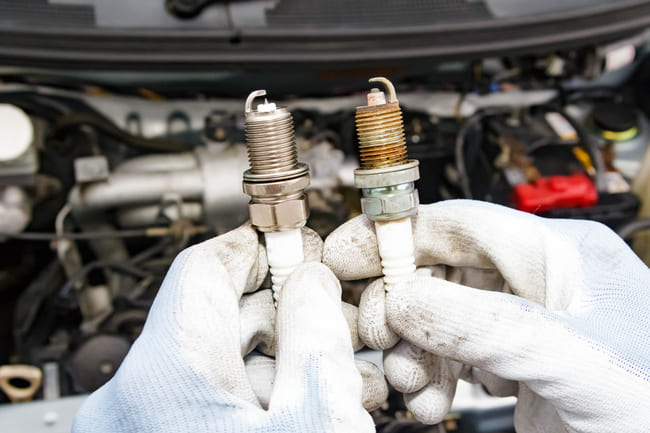
But how do you know how often to change spark plugs? What counts as a regular interval? This depends of course on the type of spark plugs, the car you are driving, and a whole host of other factors. There are a few milestones, however, that experts recommend as good moments to change your spark plugs.
30,000 miles was for a long time the recommended interval for changing your spark plugs. Low quality spark plugs (made with less durable material like copper) should be replaced every 20,000 to 30,000 miles. You can do this yourself or get it done at a garage. If you want them to last slightly longer, it could be worth thinking about upgrading your plugs. Modern cars will come with longer lasting spark plugs as standard.
60,000 miles, however, is a much more common change interval nowadays. Most quality spark plugs are recommended to be changed at 60,000 miles and this is currently the most widely accepted change interval for most spark plug types of today.
If you have high-quality spark plugs, you could leave it as long as 80,000 to 100,000 miles before changing your spark plugs. Most manufacturers advise that you can travel at least 80,000 miles before a change is required for the newest vehicles. High-performance spark plugs might even last 100,000 miles. E3 spark plugs, for example, specifically advertise themselves as long lasting spark plugs capable of going for 100,000 miles. This might be true in theory, but most mechanics recommend changing them before this and driving conditions can affect performance as well.
Do diesel cars have spark plugs?
Spark plugs are exclusive to petrol engines, meaning diesel cars do not use them. While petrol engines ignite the fuel-air mixture with a spark from the spark plug, diesel engines use a compression ignition process, where the fuel is ignited by the heat of the compressed air. Glow plugs assist in cold starts by preheating the combustion chamber, ensuring smoother ignition. This fundamental difference in ignition methods explains why diesel engines operate without spark plugs, relying on compression and glow plugs for efficient combustion.
What spark plugs should I get for my car?
With all this in mind, there are several factors to consider when choosing spark plugs and there are several spark plug types. Here is a general overview of a couple of the key things you might consider.
You could buy a single- or multi-electrode spark plug. While single ones have one centre and one side electrode, multi ones have up to 4 side electrodes. The simple design of single electrodes makes sure combustion takes place seamlessly, but multi electrodes last much longer.
The centre electrodes can also be made of different materials, as we mentioned before. They can be copper-nickel, platinum iridium, or silver. Each of these has their own unique advantages, but platinum and iridium spark plugs are relatively expensive. For the price, though, you do get good quality goods. Check the article above for more information!
Spark plugs can also have different heat ranges, either cold, medium, or hot. To put it simply, hot spark plugs have a low heat dispersal and are useful in engines with a low compression ratio. Cold spark plugs have high heat dispersal and are used in engines that have a high compression ratio. Medium plugs are a balance of these two. It really depends on what car you have and what type of driving you’ll be doing.














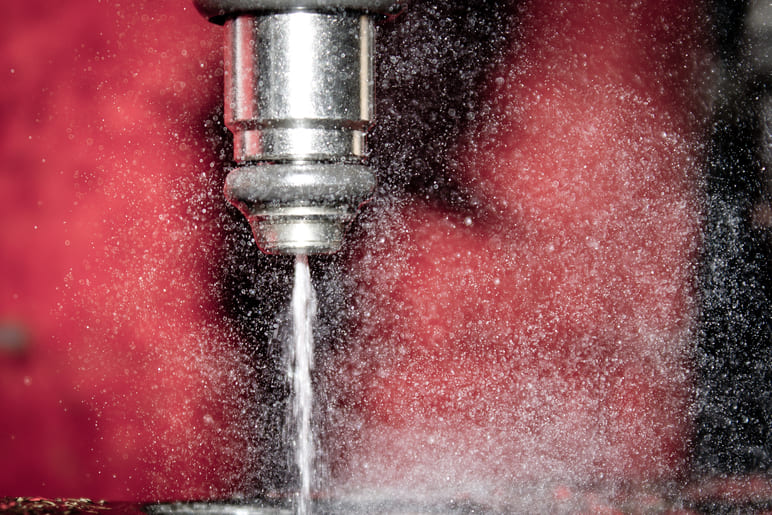

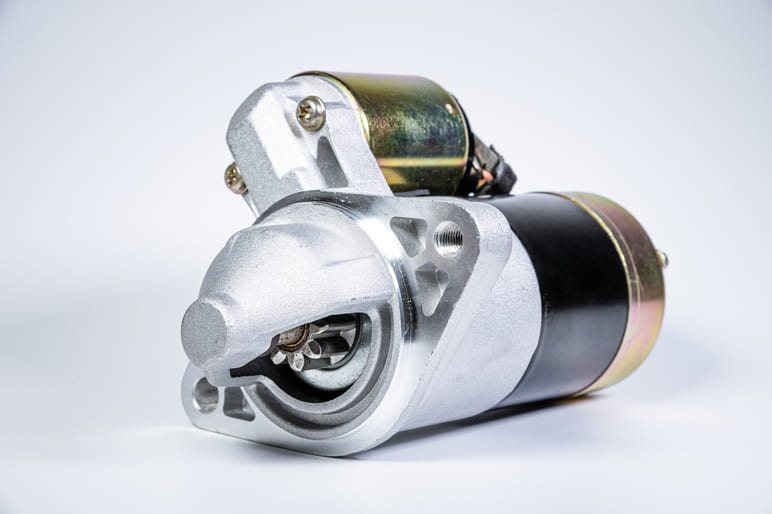
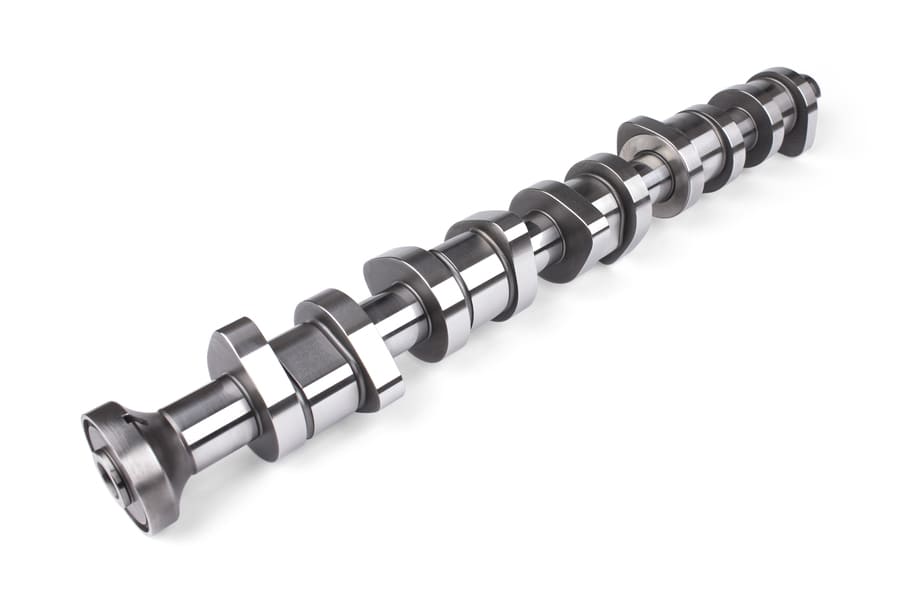
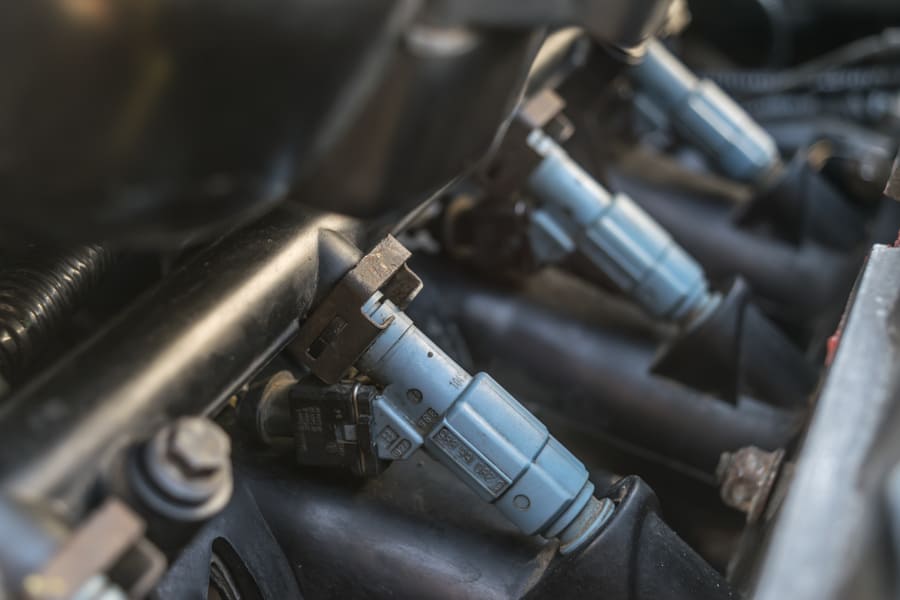
Comment